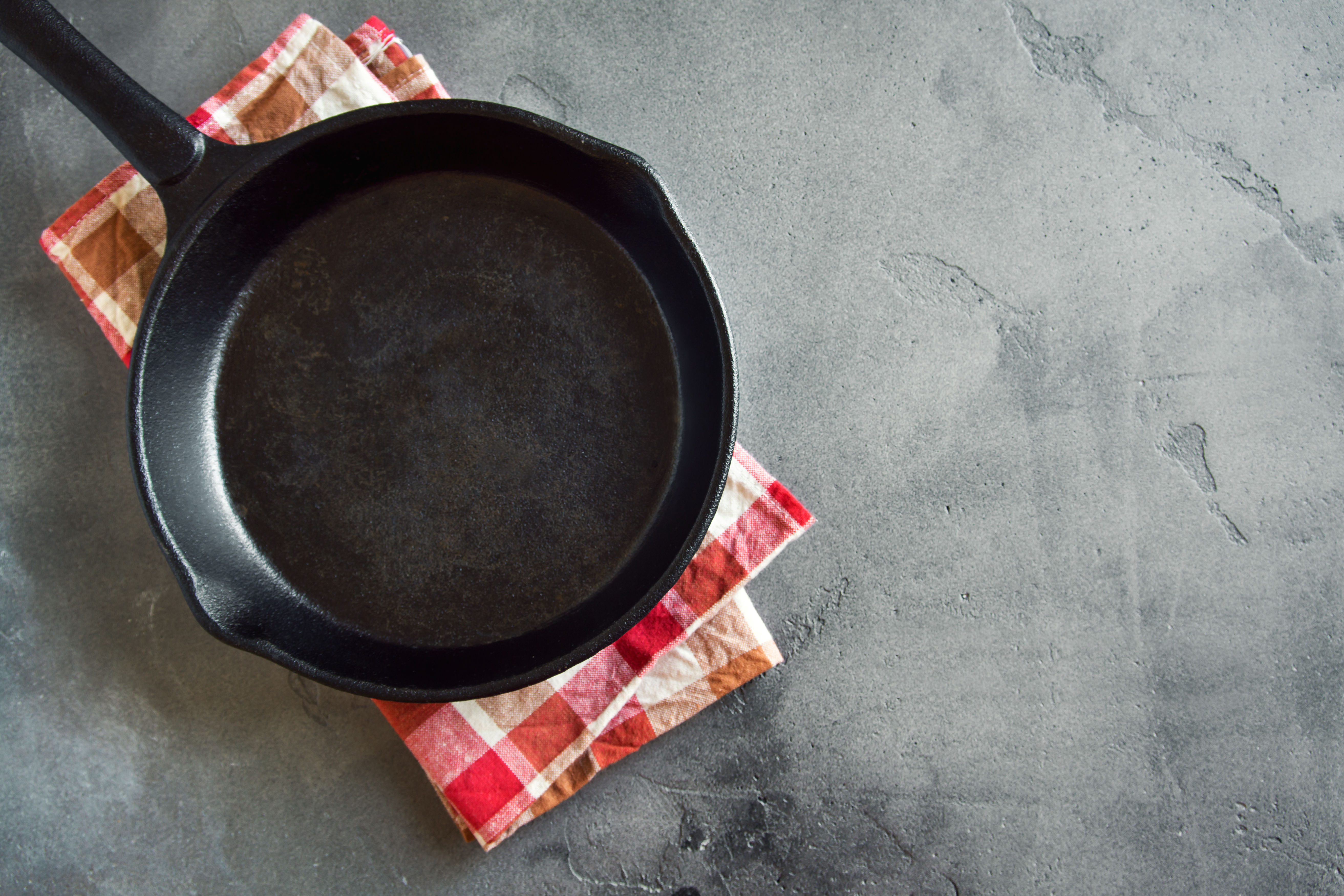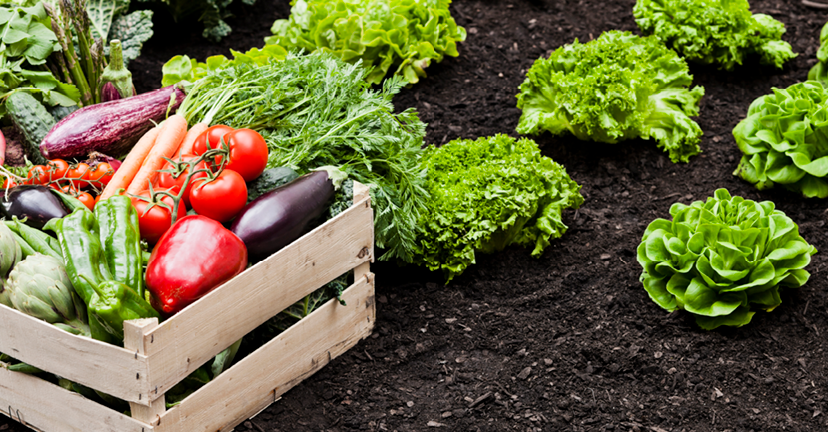5 Easy Care Tips for Cast Iron
Maureen Murphy, Manager Consumer Trends, Nutrition and Lifestyles
 I fondly remember my grandmother’s well-seasoned cast iron pan, and the wonderful foods prepared in it. For many years I wanted one, but up until several years ago I was under the mistaken impression that cast iron still required a lot of care. An incredibly useful tool in the kitchen, cast iron is ideal for searing meats, retaining heat, and can go from stovetop to oven so you can even bake in it!
Once upon a time, cast iron skillets had to be seasoned before using for the first time, whereas today they are pre-seasoned in the factory making them ready for use after a quick rinse and thorough dry.
Thanks to these tips from Lodge, maker of cast iron cookware, it’s easy to keep cast iron looking and performing well.
I fondly remember my grandmother’s well-seasoned cast iron pan, and the wonderful foods prepared in it. For many years I wanted one, but up until several years ago I was under the mistaken impression that cast iron still required a lot of care. An incredibly useful tool in the kitchen, cast iron is ideal for searing meats, retaining heat, and can go from stovetop to oven so you can even bake in it!
Once upon a time, cast iron skillets had to be seasoned before using for the first time, whereas today they are pre-seasoned in the factory making them ready for use after a quick rinse and thorough dry.
Thanks to these tips from Lodge, maker of cast iron cookware, it’s easy to keep cast iron looking and performing well.
- Cast iron can be washed – wash by hand using a nylon bristle brush, and if needed, use a pan scraper for any stubborn cooked-on bits.
- Do not: soak in water, use a dishwasher or metal scouring pads
- A mild detergent may be used, but isn’t necessary after each washing
- For particularly sticky food, simmer a little water for 1 minute, then use a pan
 scraper after skillet has cooled.
scraper after skillet has cooled. - Dry immediately and thoroughly
- Rub with a little food-safe cooking oil/shortening (vegetable or canola oil recommended), preferably while skillet is still warm
- Use it frequently as the more often you use it the better it gets as the seasoning (oil) builds up on the pan creating a nonstick layer
- Scrub with a metal scouring pan
- Wash
- Dry
- Oil interior and exterior
- Place upside down with piece of foil or sheet pan underneath
- Bake in a 350° oven for 1 hour; allow to cool completely in oven
Get Your Grill On!
Maureen Rowan Murphy, Manager Consumer Trends, Nutrition and Lifestyles
 I believe the best gift is the gift of time-time spent with those we love. While my Dad is no longer here, one of my fondest memories is the last Father’s Day I spent with him. Not only did we have quality time together, but I grilled and served one of his favorite meals. Had I not tackled my grilling “fears” that cherished memory would likely not exist.
While always comfortable cooking in the kitchen my comfort level didn’t extend outdoors. The grill was uncharted territory, and one day I made up my mind that I had to change that. I learned the basics, and then jumped right in and fired up the grill! Sure, there were a few grilling mishaps, but as my confidence grew so did my skills. I guess you could say it was trial by fire! Now I’m viewed as the grill master in my house. If you’re intimidated like I was, here are tips to help you on your way to becoming a grill master!
Gather It Up
I believe the best gift is the gift of time-time spent with those we love. While my Dad is no longer here, one of my fondest memories is the last Father’s Day I spent with him. Not only did we have quality time together, but I grilled and served one of his favorite meals. Had I not tackled my grilling “fears” that cherished memory would likely not exist.
While always comfortable cooking in the kitchen my comfort level didn’t extend outdoors. The grill was uncharted territory, and one day I made up my mind that I had to change that. I learned the basics, and then jumped right in and fired up the grill! Sure, there were a few grilling mishaps, but as my confidence grew so did my skills. I guess you could say it was trial by fire! Now I’m viewed as the grill master in my house. If you’re intimidated like I was, here are tips to help you on your way to becoming a grill master!
Gather It Up
- Gather everything up to avoid leaving food unattended on hot grill
- Wire brush
- Long-handled matches/lighter and charcoal for charcoal grill
- Long handled tongs
- Metal spatula
- Basting brushes
- Skewers
- Grill basket
- Meat thermometer
- Clean platters and utensils
- Heavy duty oven mitts
- Reduce food sticking by taking a paper towel dipped in a little oil, and using tongs, wipe evenly over the grates
- Preheat grill 10 to 15 minutes to ensure it reaches the proper temperature as well as kill any possible bacteria
- Grilling Temperatures – High: 400-450°F for high; medium-high: 350-400°F; medium: 300-350°F; low: 250-300°F
- A properly heated grill sears foods on contact, keeps the insides moist and helps prevent sticking
- Keep a spray water bottle for gas or charcoal grills nearby in case of flare ups
- Don’t use cooking spray on a hot grill
- Sear the meat to seal in juices and capture its best flavors
- Turn grill down after searing so food does not burn outside and remain raw inside
- Use tongs when turning meat or poultry to keep natural juices inside
- Turn food only once – the less you flip, the more the flavor develops
- Apply sauces and glazes during last 10 minutes to avoid potential flare-ups
- Close grill lid to enhance smoky flavor and keep moisture in
- Use a food thermometer to ensure a safe internal temperature
- Steaks, roasts and chops: 145°F with a 3 minute rest time
- Ground beef, pork, lamb and veal: 160°F
- Poultry, including ground poultry: 165°F
- Let meat “rest”, tented with foil, about 10 minutes before cutting
Keep Your Food and Family Safe This Summer!
 After a long winter and cool spring, temperatures are finally warming up making everyone eager for outdoor picnics and barbecues. While these temperatures are ideal for that, they also provide a perfect environment for bacteria and other pathogens in food to multiply rapidly and cause foodborne illness.
You can help prevent harmful bacteria from making your family sick by avoiding the “Danger Zone” and following the “Core Four”.
The Danger Zone: temperature range between 40°F and 140°F
After a long winter and cool spring, temperatures are finally warming up making everyone eager for outdoor picnics and barbecues. While these temperatures are ideal for that, they also provide a perfect environment for bacteria and other pathogens in food to multiply rapidly and cause foodborne illness.
You can help prevent harmful bacteria from making your family sick by avoiding the “Danger Zone” and following the “Core Four”.
The Danger Zone: temperature range between 40°F and 140°F
- Keep food out of this range as foodborne bacteria can grow rapidly to dangerous levels that can result in illness
- Always keep cold food COLD, at or below 40°F, in coolers or in containers with ice or frozen gel packs
- Keep hot foods HOT, at or above 140°F, on the grill or in insulated containers, heated chafing dishes, warming trays or slow cookers
- Reheat foods to 165°F
- Wash hands with warm water and soap for 20 seconds before and after handling food
- Clean kitchen surfaces, dishes and utensils with hot water and soap
- Have one cutting board for produce and another one for meat, poultry and seafood
- Use separate plates and utensils for raw and cooked foods
- Wash plates, utensils, and cutting boards that held raw meat, poultry, seafood, or eggs before reusing
- Marinate in the refrigerator and not on the counter keeping raw meat/poultry separate from any veggies you might be using
- If you plan to reuse the marinade as a sauce be sure to boil it first to destroy any harmful bacteria or make extra to set aside before adding raw meat/poultry
- Cook: Cook to safe internal temperatures
- Use a food thermometer to ensure food is thoroughly cooked
- Whole cuts of meat (steaks, chops and roasts) – 145°F with a 3 minute rest time
- Ground beef, pork, lamb and veal- 160°F
- Poultry, including ground poultry- 165°F
- Fish – 145°F
- Leftovers – 165°F
- Refrigerate perishable food within one hour in hot weather (above 90°F) and within two hours if temperatures are below 90°F
- Place leftover foods in shallow containers for quick cooling







